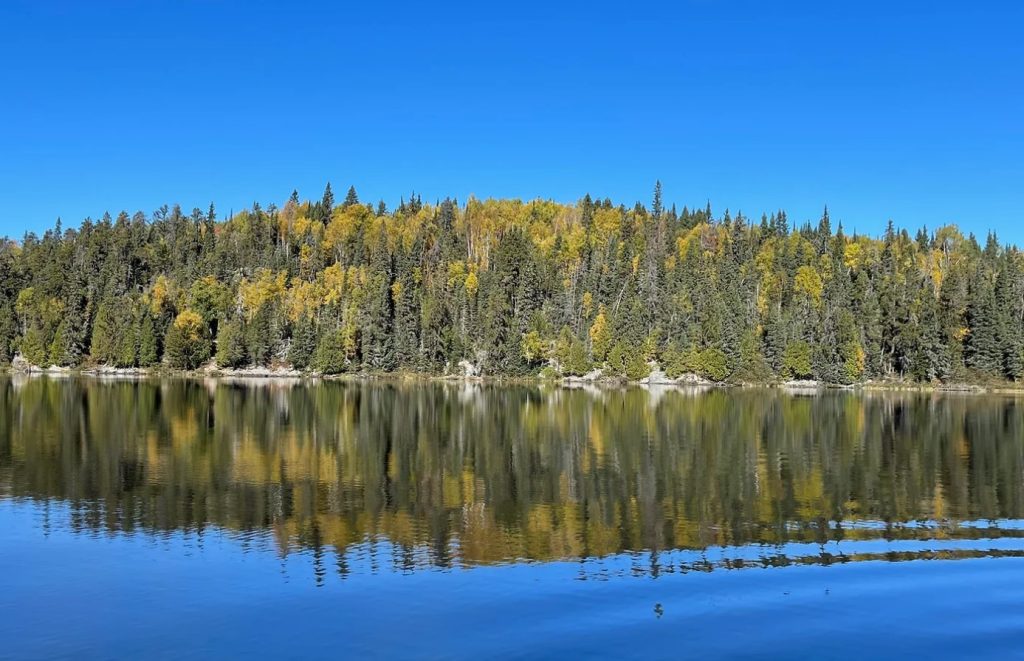Kirkland Lake Discoveries samples up to 4.25 g/t gold at Lucky Strike, Ontario

Kirkland Lake Discoveries Corp. [TSXV-KLDC; OTC-KLKLF] reported results from the summer and fall exploration programs, northeast Ontario. Airborne geophysics, mapping, and prospecting on the Lucky Strike property outlined the 7 km-long by 3 km-wide prospective Hurricane intrusive zone.
Follow-up mapping and sampling returned gold and copper grab samples up to 4.25 g/t gold and 0.95% copper.
“This was an incredibly productive field season for the company. We had multiple teams of prospectors, mappers, and samplers traversing the recently acquired ground, advancing our knowledge and understanding of the Lucky Strike,” Founder, Director, and CEO Daniele Spethmann commented. “Whiskey Jack is a new showing on the Hurricane intrusive zone that has the geological and structural features of a potential feeder zone for the alteration and mineralization that occurs in the area. Copper and gold assays at Whiskey Jack, Jensen, Vallillee, and Norwood showings indicate that mineralization is widespread over this newly identified regional showing. We look forward to following up these results with more detailed analysis and drilling.”
Interpretation of the magnetic survey flown in June 2023 identified a ring-shaped magnetic feature similar to the one found at the Upper Beaver deposit. These magnetic features are reflected by mafic syenite in contact with mafic volcanic rocks.
In late July, Lindsay Hall, Chief Geologist of ALS GoldSpot, a structural geologist and Abitibi expert familiar with the Upper Beaver deposit, led a mapping and prospecting team to ground truth the interpretations from the geophysical survey. Initial findings indicate that the Hurricane area contains exceptional alteration and mineralization of stockwork fractured porphyritic syenites, and epidote, potassium-feldspar-altered mafic volcanics with arsenopyrite.
In 2017 and 2018, an aeromagnetic, magnetotelluric, and seismic transect across the Kirkland Lake-Larder Lake greenstone belt was completed by Mineral Exploration Research Centre (MERC). Interpretation by MERC demonstrate that the Hurricane intrusive zone corridor lies within a strongly conductive response similar to the Cadillac-Larder Lake deformation zone.
Historical exploration work in the Hurricane area identified six showings with varying degrees of copper and gold mineralization.
Whiskey Jack East (formerly MacDonald): The Whiskey Jack East showing is a syenite with associated feldspar porphyry with sericitic and fuchsitic alteration.
Norwood: The Norwood showing is located within a magnetic high and exhibits strong sericite alteration on the margins of quartz vein sets. There are two distinct, parallel EW-trending vein sets with intermittent intensity of shearing within this EW zone. The KLDC sampling returned gold mineralization including 4.25 g/t Au, 3.81 g/t Au, and 3.32 g/t Au].
Jensen: All samples taken by the KLDC team at and around the Jensen showing, a 1930s pit, returned copper and gold assays with values up to 0.76 g/t Au with 0.69% Cu.
Vallillee: A 2006 grab sample of altered syenite with minor pyrite and no quartz veining assayed 128 g/t Au. This highly anomalous sample was followed up in 2007 with two x-ray diamond holes totalling 104 feet. The first hole intersected high-grade gold including 13 g/t Au over 76 cm and 7 g/t Au over 91 cm. Sampling by KLDC returned gold and copper mineralization including 1.93 g/t Au with 0.73% Cu, 0.79 g/t Au with 0.63% Cu and 0.49 g/t Au with 0.73% Cu.
Flood: A 1923 report by a prospector indicated that gold could be panned on the Macdonald, Wood, and Flood showings on the Misema Lake Peninsula. KLDC sampling returned 0.76% Cu and 0.95% Cu.
Wood: The Wood showing (1920s) was drill tested by Wallbridge in 2009, southwest of the showing targeting a strong chargeability anomaly, that is coincident with a strong magnetic signature. The hole intersected gabbro intruded by a feldspar porphyry and a syenite sequence, and no significant mineralization was reported.
From August to November, systematic mapping and prospecting was undertaken across the Hurricane intrusive zone. Tightly spaced blocks of 50-metre line spacing were planned for prospectors to traverse systematically.
Results from this program suggest that the consistency of mineralization may indicates the existence of an extensive Au-Cu intrusive system.
A 4,000-metre diamond drilling program is planned at the Hurricane intrusive zone for Q1 2024. Drilling will target all showings that have returned consistent gold and copper values.
Located within a NE-trending TDEM corridor between the Hurricane intrusive zone and Upper Beaver is the historical Copper King mine. Grab samples during 2023 returned assays including 0.8%, 1% and 1.16% Cu.
Drilling at the Goodfish-Kirana focused on regional targets along the east-west trending Kirana deformation zone defined by coincident northwest structures, IP chargeability anomalies, and known gold mineralization at shallow depths. Two holes (KLD23-08 and KLD23-09) were also completed at the Jo Zone to investigate recent high-grade assays in the hanging-wall, where drilling in 2021 reported 155 g/t Au over 0.75m and 72 g/t Au over 0.50m. The Jo Zone was extended down-plunge ~75 m in hole KLD23-08 returning 2.07 g/t Au over 7.7 m.
Drill permit approval for the Hurricane intrusive zone on the Lucky Strike claim group has been received and the next phase of drilling is scheduled for Q1 2024.
Kirkland Lake Discoveries recently consolidated a district-scale and highly prospective land package in the Kirkland Lake Gold Camp, Ontario.
The properties assembled include the 100%-owned Lucky Strike Property, Goodfish-Kirana, the Arnold property, and the optioned KL West (KLW) and KL Central (KLC) properties. The KLDC land position comprises approximately 38,000 ha, over 1,338 claims and 29 patented claims and ranks the company as the largest landholder in the Kirkland Lake region.
